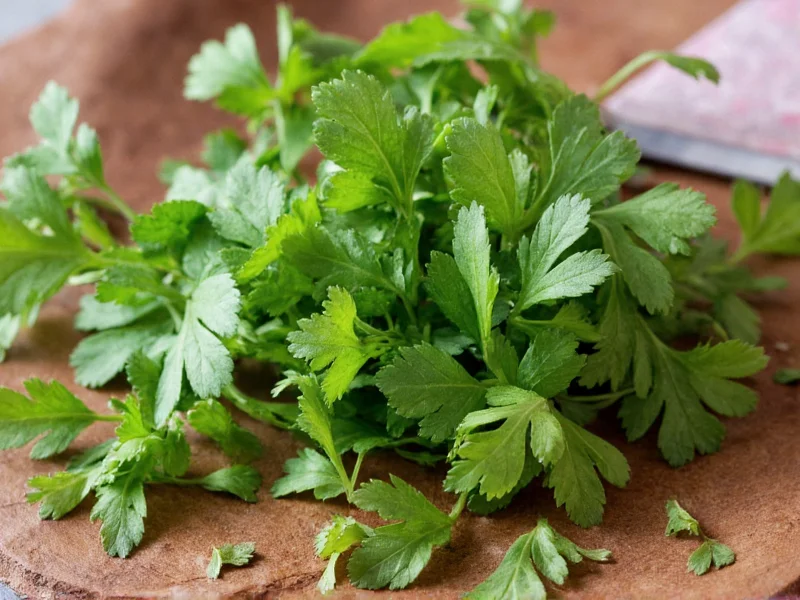Understanding Cilantro Spice: Beyond the Confusion
Many home cooks confuse cilantro spice with coriander seeds, but they're fundamentally different products from the same plant (Coriandrum sativum). Cilantro spice specifically means dried cilantro leaves, while coriander refers to the plant's seeds. This distinction matters because their flavor profiles, culinary applications, and storage requirements differ significantly.
Cilantro vs. Coriander: Clearing the Confusion
The terminology varies globally. In North America, "cilantro" describes the fresh leaves, while "coriander" refers to the seeds. In many other countries, "coriander" describes both. When a recipe calls for "cilantro spice," it means dried cilantro leaves—not ground coriander seeds.
| Product | Plant Part | Flavor Profile | Best Culinary Uses |
|---|---|---|---|
| Fresh cilantro | Leaves and stems | Bright, citrusy, slightly peppery | Garnishes, salsas, fresh sauces |
| Dried cilantro (cilantro spice) | Dried leaves | Earthy, milder citrus, slightly floral | Long-simmered dishes, spice blends, dry rubs |
| Coriander seeds | Seeds | Warm, nutty, citrus undertones | Curries, pickling, baked goods |
Flavor Transformation: Fresh to Dried
Drying cilantro changes its chemical composition. The volatile compounds responsible for fresh cilantro's bright flavor partially evaporate during dehydration, resulting in a more subtle, earthy profile. This transformation makes dried cilantro ideal for dishes requiring extended cooking times where fresh cilantro would lose its character.
When substituting dried for fresh cilantro, use a 1:3 ratio (1 teaspoon dried cilantro equals 1 tablespoon fresh). Add dried cilantro early in the cooking process to allow its flavors to fully integrate, unlike fresh cilantro which is typically added at the end.
Optimal Culinary Applications
Dried cilantro shines in specific applications where fresh would be impractical:
- Long-simmered dishes: Stews, chili, and bean dishes benefit from dried cilantro's ability to withstand hours of cooking
- Dry spice blends: Adds complexity to taco seasoning, curry powders, and za'atar variations
- Marinades and rubs: Adheres better to proteins than fresh cilantro
- Baked goods: Works in savory breads and crackers where fresh would wilt
For authentic Mexican cuisine, dried cilantro appears in traditional mole recipes and certain regional salsas where fresh cilantro isn't practical. In Middle Eastern cooking, it enhances certain spice blends where its floral notes complement other warm spices.
Storage and Shelf Life Considerations
Proper storage maintains dried cilantro's flavor. Keep it in an airtight container away from light, heat, and moisture. Under ideal conditions, dried cilantro retains optimal flavor for 1-2 years, though it remains safe indefinitely.
Check freshness by rubbing a small amount between your fingers and smelling. Fresh dried cilantro should have a distinct herbal aroma. If it smells dusty or has no scent, it's lost most flavor compounds and should be replaced.
Substitution Strategies
When cilantro spice isn't available, consider these alternatives based on your recipe's requirements:
- For fresh cilantro flavor: Use 1 teaspoon dried parsley plus a pinch of lemon zest
- For earthy notes: Substitute equal parts dried Mexican oregano
- For complex spice blends: Combine equal parts dried mint and dried dill
- When unavailable: Fresh cilantro added at the end of cooking (not a direct substitute but preserves fresh flavor)
Remember that no substitute perfectly replicates dried cilantro's unique profile. The best approach depends on whether you need its citrus notes, earthiness, or floral qualities for your specific dish.
Common Questions About Cilantro Spice
Can I substitute coriander seeds for cilantro spice?
No, coriander seeds and cilantro spice are not interchangeable. Coriander seeds have a warm, nutty flavor while cilantro spice (dried leaves) offers earthy citrus notes. Using coriander seeds instead would significantly alter your dish's flavor profile.
Why does dried cilantro taste different from fresh?
Drying concentrates certain compounds while volatile oils evaporate. Fresh cilantro's bright aldehydes diminish during dehydration, resulting in a more earthy, mellow flavor. This transformation makes dried cilantro suitable for long-cooking dishes where fresh would lose its character.
What's the best way to rehydrate dried cilantro?
For optimal flavor release, steep 1 teaspoon dried cilantro in 2 tablespoons hot water or broth for 10-15 minutes before adding to your dish. This rehydration process helps restore some of the lost volatile compounds and integrates the flavor more smoothly into sauces and soups.
Does dried cilantro contain the same nutrients as fresh?
Drying concentrates certain nutrients like calcium and iron per volume, but reduces vitamin C content significantly. Both forms provide dietary fiber and antioxidants, though the specific compounds differ due to the dehydration process. Fresh cilantro generally offers higher overall nutrient diversity.
Can I make my own dried cilantro at home?
Yes, spread fresh cilantro leaves in a single layer on a baking sheet and dry in the oven at the lowest setting (170°F/75°C) for 2-3 hours until brittle. Alternatively, hang small bunches upside down in a dark, well-ventilated area for 1-2 weeks. Store in an airtight container away from light once fully dried.











 浙公网安备
33010002000092号
浙公网安备
33010002000092号 浙B2-20120091-4
浙B2-20120091-4